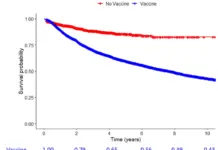
From Natural News Friday, March 04, 2016 by: Julie Wilson
(NaturalNews) Referred to as a “maverick allergist” by The New York Times, Dr. Theron G. Randolph is the pioneer of environmental medicine, a field involving environmental science, chemistry and medicine that examines the impact our physical environment has on human health.
Randolph and others in this field of medicine believe that environmental pollutants sometimes cause illness, including chemical sensitivity, a debilitating condition caused by an increased sensitivity to certain chemicals.
In his book An Alternative Approach to Allergies, Randolph describes in detail the manner in which our environment contributes to food and environmental allergies. The following is an excerpt from his book:
For many people, of course, “allergy” primarily means reactions to such inhalants as dusts, pollens, danders, and molds. Patients with these afflictions can also be helped by the methods of clinical ecology, especially when such allergies are made worse by hidden food and chemical reactions.
Allergies have a more broadened definition than you might think
In this book, however, reactions to common foods and chemicals shall be emphasized, and the more serious cases at that. They are emphasized because the allergic basis of such problems as hay fever is already well known, while serious reactions to foods and chemicals are still a largely unknown territory to most people.
I have practiced this approach to illness throughout my fifty years as an allergist in the Midwest. I have treated about 20,000 people for food allergies and related problems and have dealt with virtually every kind of chronic illness on an allergic basis.
About 7,500 of these patients were suffering primarily from so-called mental problems. The majority of these patients have been helped significantly, often after conventional methods of treatment had failed. Sometimes patients have come to me with a single well-defined ailment.
Typically, however, patients have been poly-symptomatic, that is, they have had a long history of many problems, physical and mental, which had left them in a general state of misery. The more symptoms they accumulated, the less their doctors believed their complaints.
Usually, neither the patients nor their physicians have suspected food allergy as the root of their problem because most food allergy, by its very nature, is masked and hidden. It is hidden from the patient, hidden from his or her family, and hidden from the medical profession in general. It is said that often the solution to a difficult problem is right in front of your nose, but you cannot see it. In the case of food allergy, the source of the problem is literally in front of you, in the form of some commonly eaten substance that is bringing on and perpetuating chronic symptoms.
Allergies can produce a variety of symptoms
Of course, some people do know that they are allergic to certain foods, but generally these are foods that are rarely eaten. A person who is allergic to cashews, for instance, may break out in a rash on the rare occasions when he consumes these nuts. He overcomes this problem by simply avoiding cashews, and that is generally the end of the matter.
Allergies to commonly eaten foods are not so readily detected or avoided, however. …
The chief reason these reactions to commonly eaten foods are not readily recognized is that they are part of a pattern of constant reactions in which periods of heightened stimulation may give way to periods of letdown, or “withdrawal” effects. In the beginning of the problem, eating the food has a marked, immediate stimulatory effect lasting up to several hours.
Simply by eating a particular food, such as coffee, wheat, or corn, as often as necessary, this “up” effect may be maintained for a relatively long period of time. It is only when such foods are not eaten regularly that a kind of “hangover,” or withdrawal reaction, occurs. Some people find, for instance, that if they sleep late on Sunday morning, they wake up with a headache, which usually goes away when they eat. The reason for this is a physical need for some food, such as coffee, which is normally taken early in the morning.
For more on food and environmental allergies, pick up a copy of Randolph’s book today!
Source: http://www.naturalnews.com/053186_food_allergies_chemical_sensitivity_environmental_medicine.html#
Disclaimer: We at Prepare for Change (PFC) bring you information that is not offered by the mainstream news, and therefore may seem controversial. The opinions, views, statements, and/or information we present are not necessarily promoted, endorsed, espoused, or agreed to by Prepare for Change, its leadership Council, members, those who work with PFC, or those who read its content. However, they are hopefully provocative. Please use discernment! Use logical thinking, your own intuition and your own connection with Source, Spirit and Natural Laws to help you determine what is true and what is not. By sharing information and seeding dialogue, it is our goal to raise consciousness and awareness of higher truths to free us from enslavement of the matrix in this material realm.
 EN
EN FR
FR

























